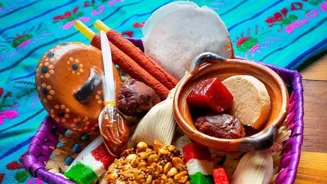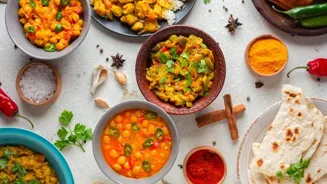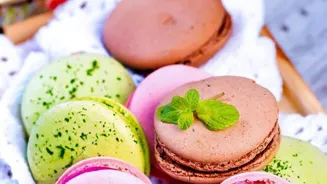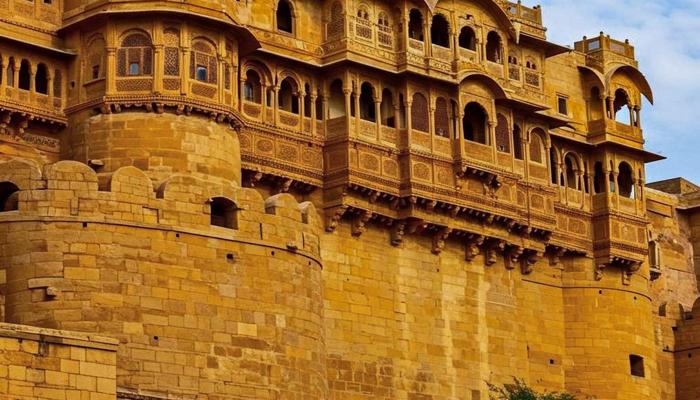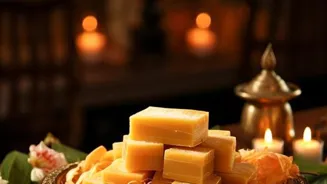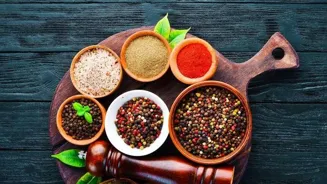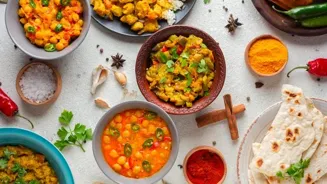Dive into the world of Indian desserts with unique stories behind them. Unravel the magic in 7 classic treats!
India, a land of vibrant colours, diverse cultures, and of course, a delectable array of sweets!
From the snow-capped Himalayas to the sun-kissed beaches of the South, each region boasts its own unique culinary treasure, especially when it comes to desserts.
While the West might rave about cakes and pastries, India has its own rich history of sweet treats, many of which are deeply intertwined with tradition and folklore.
Let’s embark on a delicious journey to discover seven classic Indian desserts, unraveling their unique stories and the magic they bring to our lives.
Gulab Jamun: a sweet treat with Persian roots, symbolizing positivity in Indian celebrations
First, we have the glorious Gulab Jamun. These deep-fried milk balls, soaked in a fragrant rose-flavored syrup, are a staple at almost every Indian celebration. But did you know that the ancestor of Gulab Jamun is believed to have originated in Persia?
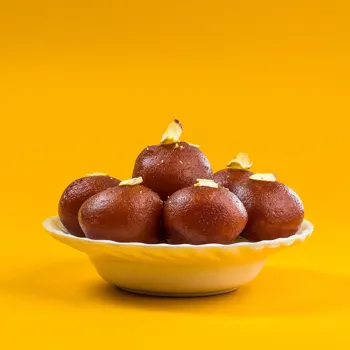
It arrived in India with the Mughal emperors and was adapted to local tastes, resulting in the Gulab Jamun we know and love today. The name itself is a blend of Persian and Hindi: 'Gulab' meaning rose and 'Jamun' referring to the small, berry-like fruit of similar shape.
Preparing gulab jamuns often involves khoya, which is solidified milk, along with a small amount of flour to hold them together. Frying them in ghee gives them a rich flavor, while the light and sweet rose syrup, perfumed with cardamom, gives them a comforting taste.
It is said that even today, in some parts of North India, it’s considered auspicious to start any special occasion with serving Gulab Jamuns, symbolizing positivity and good luck. The simple yet irresistible taste has made Gulab Jamun a forever favourite in every household.
Rasgulla: Bengali sweet, spongy and sweet, invented in 19th century Kolkata
Then there's the creamy, dreamy Rasgulla, a Bengali specialty. Made from chhena (Indian cheese) and soaked in a light sugar syrup, Rasgulla is known for its spongy texture and delicate sweetness.
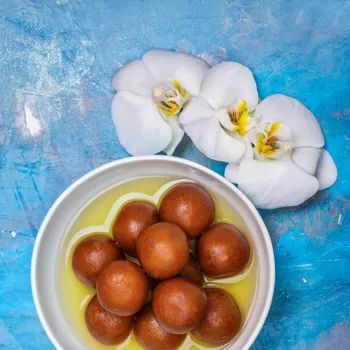
A legendary story surrounds its origin, attributing its invention to Nobin Chandra Das, a Kolkata-based confectioner in the late 19th century. Apparently, his wife was tired of the traditional, hard sweets, so he experimented using the leftover chhena from his sweet shop.
He was aiming for a lighter, softer dessert. And that is how Rasgulla was born! The sweet became an instant hit, spreading rapidly across Bengal and then the rest of India.
Though now there are several versions, some using saffron or rosewater to flavour the syrup, the original white Rasgulla remains a classic. The airy, melt-in-your-mouth feel of this sweet is an experience in itself. Rasgulla symbolises Bengal’s rich sweets culture and its commitment to innovation.
This delectable dessert has earned a loyal following throughout the country.
Jalebi: a beloved Indian street food with Middle Eastern roots
Next on our list is the vibrant Jalebi. These crispy, pretzel-shaped sweets, deep-fried and soaked in sugar syrup, are a popular street food across India. Though its exact origins are debated, Jalebi is believed to have come from the Middle East, where it is known as 'Zalabiya'.
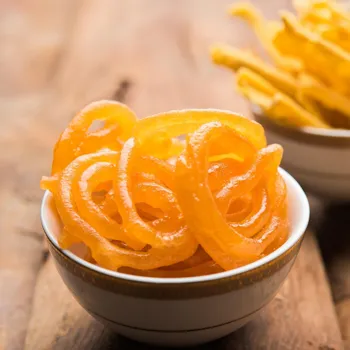
It arrived in India through trade and migration, becoming quickly loved. What makes Jalebi unique is its distinctive shape and the contrasting texture – the crispy outer layer gives way to a soft, syrupy interior.
There are several ways of making jalebi, some folks adding food colour for a vibrant orange hue and flavoring the sugar syrup with saffron or cardamom. It is often enjoyed hot, especially on cold winter mornings, and is sometimes served with rabri (thickened milk) for a richer experience.
The popularity of Jalebi extends far and wide. It's offered at fairs and celebrations, as well as sold on busy streets across the nation. It remains a favourite treat that is often prepared and enjoyed at festivals and special occasions.
Mysore Pak: A royal sweet from Mysore with rich history and unique flavor
Now, let’s move towards the South and savour the Mysore Pak. This rich, fudgy sweet made from gram flour, ghee, and sugar, hailed from the city of Mysore in Karnataka. Legend has it that it was created by a royal cook in the Mysore Palace during the reign of Krishnaraja Wodeyar IV.
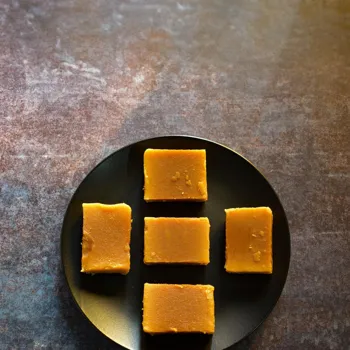
The cook, Kakasura Madappa, was trying to create a new sweet for the king. He accidentally poured a little too much ghee into the batter, resulting in a soft, melt-in-your-mouth sweet that the king absolutely loved.
Madappa named it ‘Mysore Pak’ after the city and the key ingredient (Pak – meaning sweet in Kannada). Mysore Pak is particularly popular during festivals like Diwali and Dussehra, and also weddings.
It has a distinctive flavour, a mix of nutty and buttery, and a texture that ranges from slightly crumbly to smooth. The quality often depends on the quality of the ghee used.
Despite its simple ingredients, the process requires skill and patience, leading to the perfect balance of sweetness and richness. The history of Mysore Pak is truly that of a royal treat.
Dessert journey explores the significance and flavors of Indian Ladoo sweets
Our dessert journey continues with the humble but oh-so-satisfying Ladoo. These spherical sweets come in a variety of forms, each with its own flavour profile.
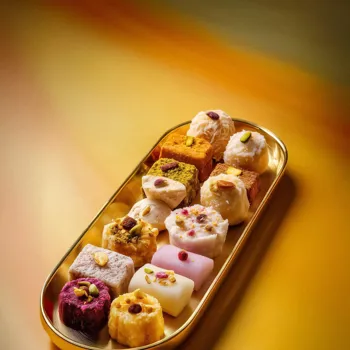
The most common types are Motichoor Ladoo, made from tiny fried gram flour balls (motichoor), and Besan Ladoo, made from roasted gram flour, ghee, and sugar. Ladoo hold great significance in Indian culture.
It is often offered to visitors as a symbol of hospitality and is an integral part of religious ceremonies and festivals. It is believed to bring good luck and prosperity.
Different types of Ladoo have different associations; for instance, Motichoor Ladoo is often associated with celebrations like weddings and Diwali, while Besan Ladoo is considered a comforting ‘home’ sweet. Making Ladoo is a labour of love.
It involves patience, attention to detail, and a generous dose of love. Many variations are made by using different lentils and flours. The popularity of Ladoo lies in its versatility, cultural significance, and of course, its irresistible sweetness.
Kulfi: Indian ice cream with rich, dense texture and royal origins
Lastly, we have Kulfi, the Indian ice cream. This dense, creamy dessert is made by slow-cooking milk until it thickens and then freezing it in molds, giving it a distinctive conical shape. The ingredients often infused with spices like cardamom and saffron, and pistachios for flavour and texture.
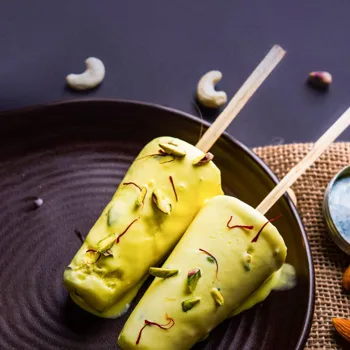
Kulfi is thought to have originated during the Mughal empire, where it was originally prepared using ice brought from the Himalayas. It was a royal delicacy! Over time, it became more accessible when preparation methods changed.
Kulfi has a denser texture than ice cream because it is not whipped, leading to a richer, more concentrated flavour. Common flavours include pistachio, mango, rose, and cardamom. It is often sold by street vendors from carts. One of the great enjoyments during hot summer days is savouring a Kulfi.
Kulfi remains a favourite because it provides a refreshing and delightful end to a meal or just a cool treat.
India's diverse sweets reflect rich cultural heritage
These seven desserts are just a small part of India's endless collection of sweets. Each one carries its own story, its own history which have enriched the cultural scene of the country.
Next time you taste one of these classics, take a moment to appreciate the traditions and flavours that have shaped generations of sweet lovers in India.
AI Generated Content. Glance/InMobi shall have no liability for the content